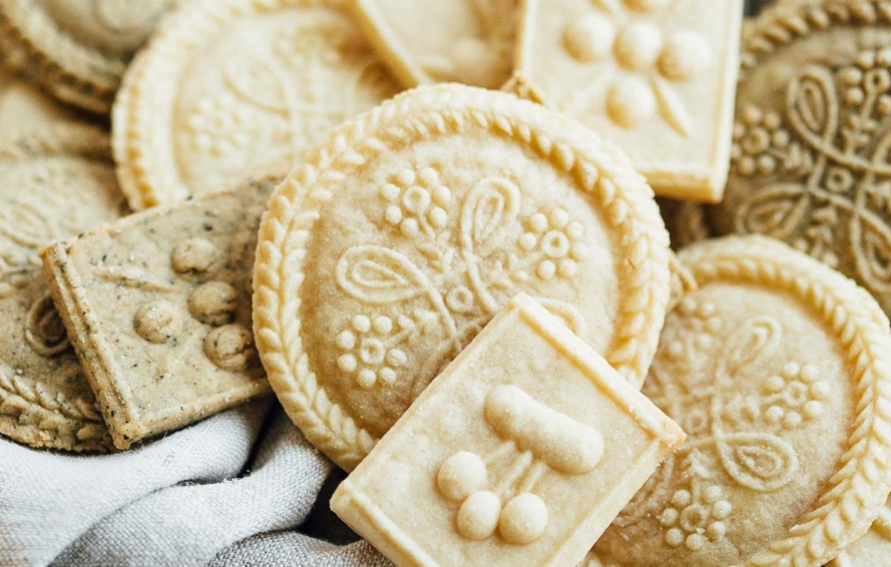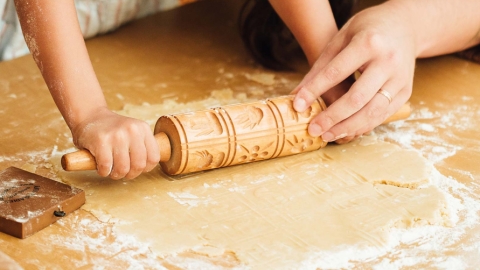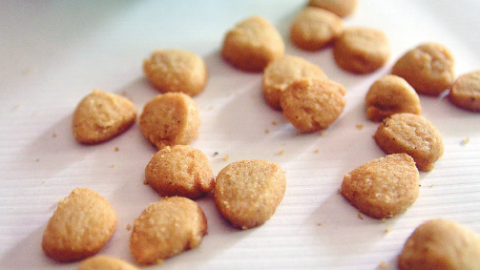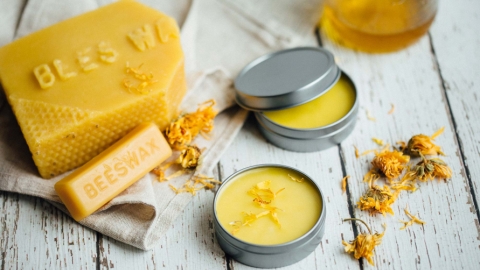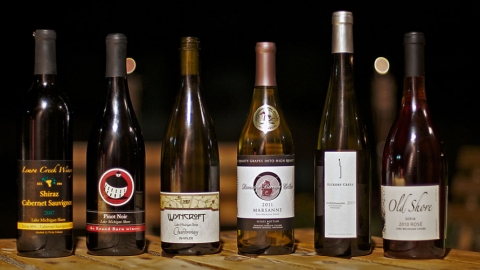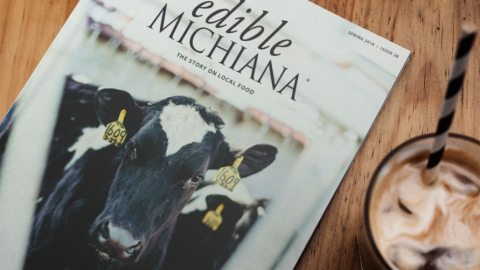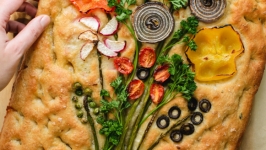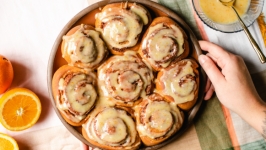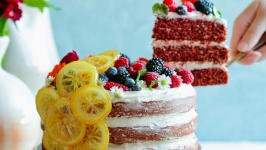Ingredients
- 1 cup unsalted butter, room temperature
- ½ teaspoon salt
- ½ cup white sugar
- 2 tablespoons light brown sugar
- 1 large egg, room temperature
- 2 teaspoons vanilla extract
- 1 teaspoon anise extract (¼ teaspoon anise oil)
- 2¾ cups all-purpose flour
- ¼ cup cornstarch
- Food coloring
- Triple sec or vodka
- Paintbrushes for food use only
Instructions
Beat the butter, salt and sugar with an electric mixer on medium speed until fluffy, 2 to 3 minutes. Beat in the egg and vanilla and anise extracts until combined. In a separate bowl, combine the flour and cornstarch, then fold it into the butter mixture. Use your hands at the end to carefully bring the dough together. Divide the dough into two discs, wrap them in plastic and chill in the fridge for 30 to 60 minutes.
Preheat the oven to 400°. Line two cookie sheets with parchment paper. Generously flour your work surface and roll out one disc of dough to about ¼-inch thick. If you will be using a rolling pin mold, make sure to roll your dough out wide enough to fit the width of the designs.
Lightly dust the top of the dough with flour and use a pastry brush to dust flour into every crevice of the springerle mold. Applying very firm and even pressure, roll or press the mold into the dough, making sure the impression is deep. With a knife, cut around the designs and place them on the prepared cookie sheet.
Bake small cookies for 7 to 9 minutes or until the edges just begin to brown. Watch them closely. Larger cookies may take longer. Test-baking one cookie of each size is a good way to determine the correct time without overbaking an entire batch.
Cool the cookies on a wire rack and repeat the process until all of the dough has been used. Let cookie sheets cool completely between batches to prevent cookies from spreading.
If you wish to paint your cookies, wait until they have completely cooled. Dot food coloring on a paper plate and place about a tablespoon of triple sec or vodka into a separate bowl. Dip your paintbrush into the alcohol and then into the food coloring and carefully paint the cookies. The alcohol allows the color to adhere to the top of the cookie instead of soaking in. The alcohol will evaporate once dried.
Store cookies on the counter in a sealed container for up to 2 weeks.
Variations
Replace the anise extract with your favorite extract flavor, such as lemon or almond, or make a chai version by adding 2 tablespoons of a loose-leaf chai tea blend at the same time you add the flour to the dough.
Notes
The dough can be made in advance and chilled. If chilled for longer than an hour, make sure to let the dough warm up on the counter so it’s easier to roll out.
Traditional hand-carved wood springerle molds are hard to find, but many online retailers offer resin replicas of traditional designs. Etsy is a great place to look for vintage and new molds.
About this recipe
Springerle (pronounced SPRING-uhr-lee) cookies are a longstanding Christmas tradition in Germany and Austria, the Alsace region of France and parts of Switzerland. These anise-flavored cookies are imprinted with designs using special molds or carved rolling pins (originally clay, then wood, and mostly resin today). The oldest known springerle mold dates to 14th-century Switzerland.
The name “springerle” comes from an old German dialect and means “little knight” or “jumping horse.” The cookies were used as ceremonial offerings during Julfest, a midwinter celebration of pagan Germanic tribes. One of the most popular molds depicted a jumping or “springing” horse.
Through the centuries, molds have reflected the historical moment. In the1600s, biblical images, and especially Christmas scenes, were common on springerle molds as a teaching tool for the illiterate. In the late Renaissance, portraits of royalty and family coats-of-arms were popular; the Rococo period brought flower garlands and cupids; during the Industrial Revolution, new technology was celebrated with steamships and hot air balloons. Cookies with hearts or fecundity symbols were used to celebrate births, weddings and betrothals.
European households have long exchanged springerle cookies at Christmas, with friendly competition for the most elaborate and beautiful molds. Almost too pretty to eat, they add old-world charm to any holiday cookie platter.
Traditional springerle cookies are hard at first and soften to an almost cake-like texture after many weeks on the counter. Our streamlined version doesn’t have the same texture as a traditional springerle cookie, but it’s a great way to enjoy the magic of a springerle mold.
Edible Michiana original recipe

